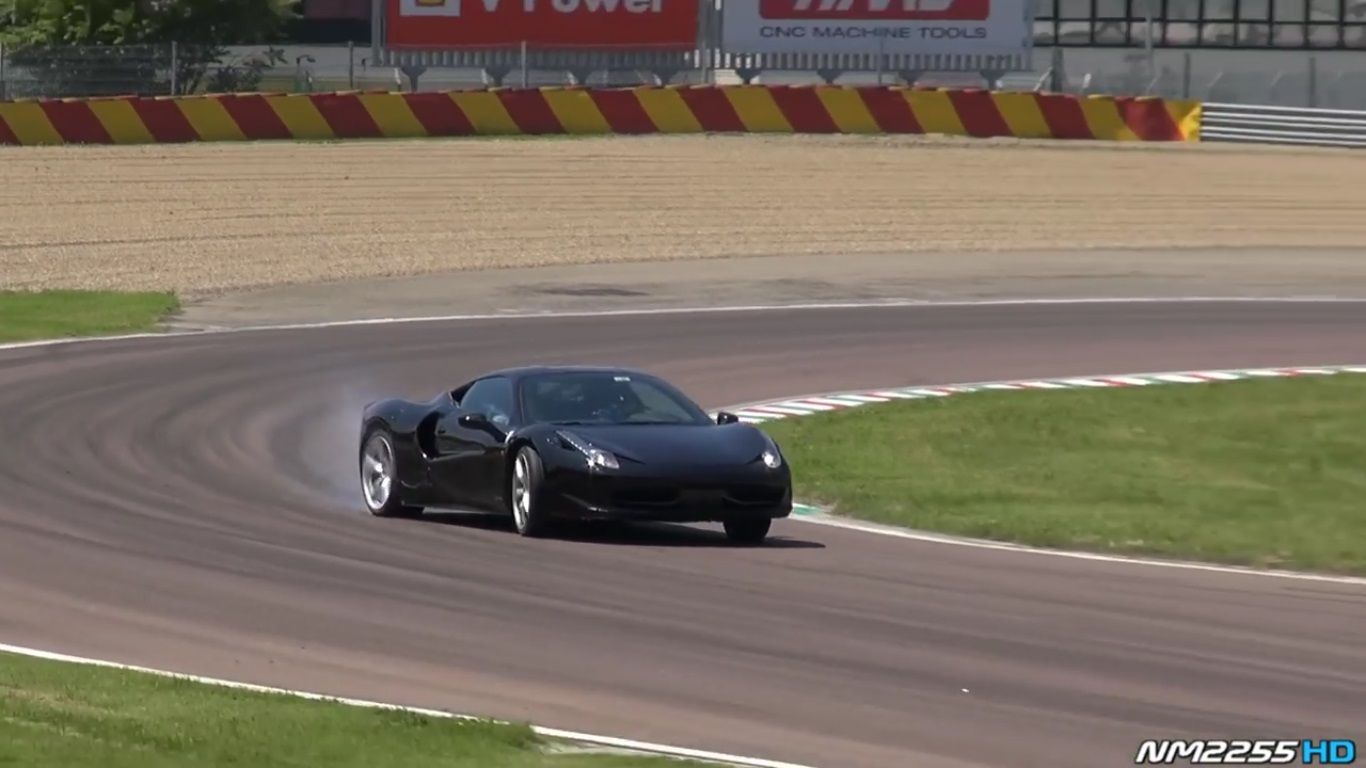If you've already watched the video,->ke278 we know what you're thinking. You're thinking “hey, that's not a 488 GTB,->ke5071 that's a 458 Italia->ke3479 with some extra holes cut into it.” The truth is that's not entirely either one, it is a 488 test mule with a 458 body. The two cars share a platform, but there is more to the different bodies than simple aesthetics. The 488's redesigned body generates 50 percent more downforce than the outgoing 458 body, while simultaneously reducing drag. The 488 body also does a much better job of incorporating the side air vents. These weren't a feature of the 458, but are required for the 488 drivetrain in the mule in the video, and they have been somewhat clumsily added in that way that those sorts of things are on a test mule.
The most significant difference between the 458 and the 488 is the engine, with a 3.9-liter twin-turbo V8 replacing the 4.5-liter naturally aspirated V8 of the 458. The change bumped the power up from 562 horsepower to 661. That extra power just makes it all the more enjoyable to watch the car tearing around the test track at Fiorano.
Ferrari 488 GTB
The 488 GTB follows the Ferrari->ke252 tradition of following up every mid-engined V8 model with a tweaked version of the car before the platform is retired. The 308->ke3523 became the 328,->ke3535 the 348->ke501 became the F355->ke441 and the 360->ke385 became the F430.->ke390 There were times when this was more of an opportunity for Ferrari to fix a lackluster model than anything else, with the 348/F355 being the best example of that. But the 458 was already a great car, so like the 328 was a fantastic version of the already excellent 308, the 488 is expected to be phenomenal.
But the 488 is also something of a gamble. This isn't Ferrari's first turbocharged model, Ferrari built several of these in the '80s, but those weren't bread-and-butter mainstream models, and it's something that the prancing horse has typically shied away from. It will be interesting to see how the 488 GTB works out, and how quickly Ferrari fans take to the idea of volume-produced turbocharging.
Read our full review here.

